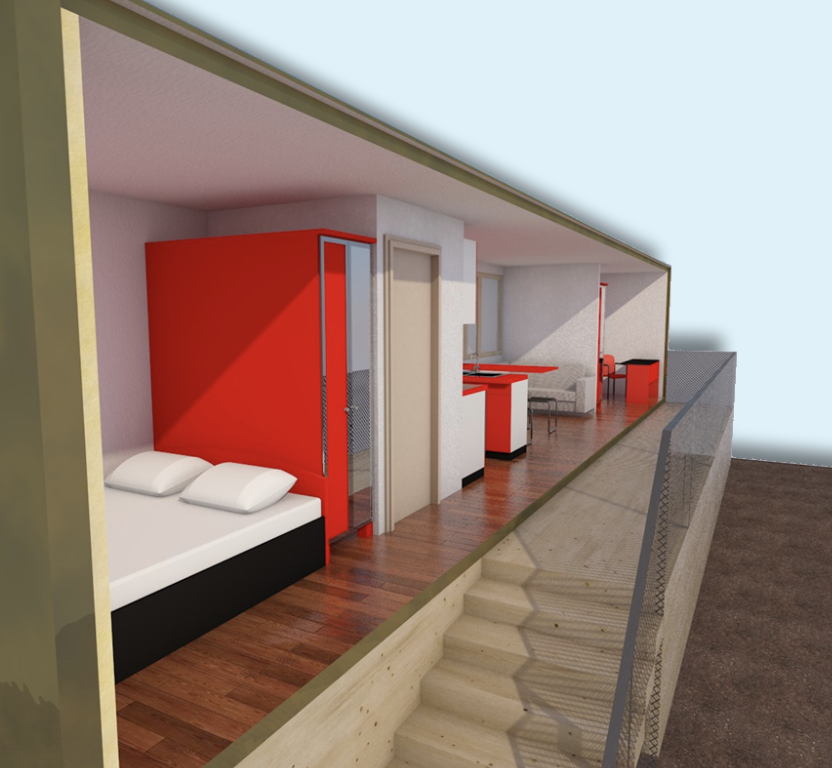"It was essential that the housing forms we devise are sustainable, i.e. that we use environmentally friendly materials for them, that they are low-waste, water- and energy-saving and that we can set them up and take them down again quickly," emphasises Gloria Rose from the Institute of Technology Assessment (ITA) at the Austrian Academy of Sciences. The result of the project "Pop-Up housing" are six housing models that are adapted to such different target groups as students, refugees, people with impairments or people in social crises.
Protection from extreme weather conditions
The Life on Track(s) - Tinytainer model can be used, for example, in the event of a flood disaster: "We are converting freight containers for this purpose, which can accommodate about 40 people at short notice. They can be quickly moved on rails to the place of action and are equipped with electricity, water and heating", explains Rose. The "Beat the Heat" model is designed to provide people with temporary shelter from the heat in naturally cooled rooms.
Social connection
Then there is the "Life Sharing to go" model: an old factory building that offers private accommodation, a communal kitchen and generous space to interact with or even learn from fellow residents. "Not only accommodation, but also the acquisition of skills and integration into society and the labour market play a role here," says Rose.
Using empty space and vacant areas
In the "DonAutonom" scenario, living space for a maximum of three months is made available from freight containers with autonomous energy supply and water treatment. People who like to experiment with self-sufficiency options could be accommodated here. In the "Flat-Pack" model, wooden modules in commercial spaces give rise to living units. With the "Gap Module", on the other hand, an entire building can be temporarily erected on a fallow site at short notice.
No substitute for housing
"It is clear that these models do not replace housing. But they can be helpful in certain situations as a stop-gap measure and offer the opportunity to gain experience and learn about sustainable building and housing. They should therefore also be recognised and organised by those responsible," says Rose. What is special about this project is that the temporary housing models developed here are also experimental spaces. "We want to analyse the experiences of those who use pop-up housing and record them in such a way that an international exchange is possible. Pop-up housing is a global phenomenon that should also find space in Austria."
